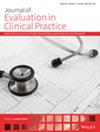Vaccine Hesitancy Among Family Doctors and Family Health Workers: Prevalence and Associated Factors
Abstract
Aims
The aim of the study was to determine the prevalence of vaccine hesitancy among family doctors and family health workers regarding vaccines included in the childhood vaccination calendar and to identify factors that may be associated with vaccine hesitancy among participants.
Methods
A total of 131 people, 76 family doctors and 55 family health workers in Bilecik province and its districts, representing 89.7% of the population, were included in the cross-sectional study. The study data collection period was 01−31 March 2024. Data were collected online. All participants were asked to complete a socio-demographic data form, their intention to vaccinate their children for each of the 14 vaccines included in the vaccination calendar in Turkey, and a data collection form asking about variables that may be associated with vaccine hesitancy. Participants were categorised according to their intention to vaccinate their children and grouped into vaccine hesitancy and vaccine acceptance, and statistical analyses were performed between the groups.
Results
It was found that 19.1% of participants had at least one vaccine hesitancy. The age and years of experience of family doctors and family health workers with vaccine hesitancy were higher than those with vaccine acceptance. In addition, the rate of vaccine ambivalence was significantly higher among these participants who had children (p < 0.05).
The belief that children should only be vaccinated against serious diseases is significantly higher among vaccine ambivalent than vaccine accepting respondents (p < 0.05). The belief that vaccines are not one of the safest ways to protect against infectious agents, the belief that vaccines have not become better and more effective through scientific research, and the belief that vaccines do not strengthen the immune system were significantly higher among vaccine ambivalents than among vaccine acceptors (p < 0.05).
Conclusions
In conclusion, the results of this study indicate that vaccine hesitancy is common among healthcare workers, that vaccine hesitancy is associated with factors such as age, working years, and having children, and that individuals with vaccine hesitancy hold various misconceptions about vaccines.

 求助内容:
求助内容: 应助结果提醒方式:
应助结果提醒方式:


